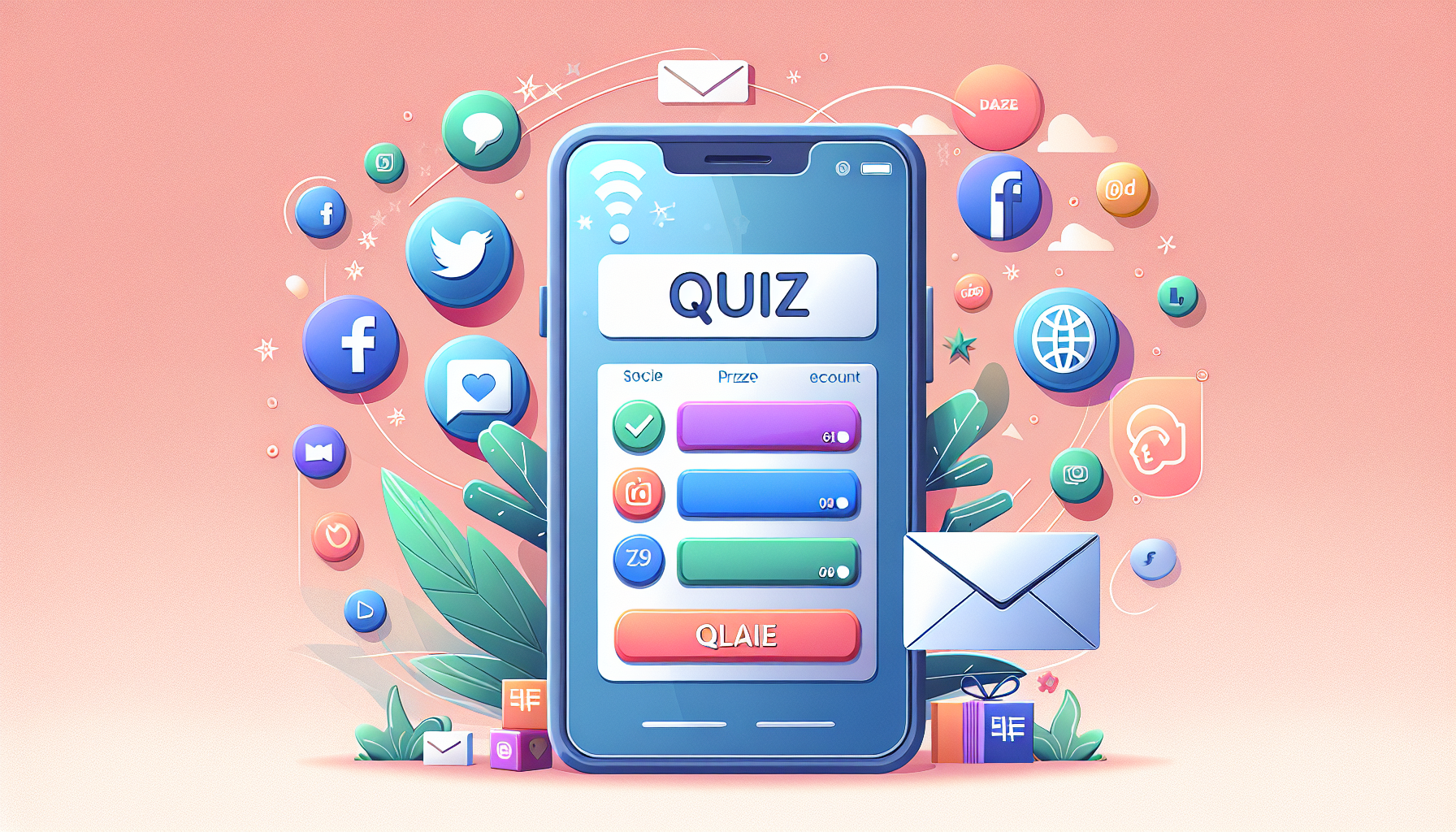Creating quizzes that can be easily taken on a mobile device can feel like a daunting task. You might worry about how to maintain engagement and ensure your questions are crystal clear on smaller screens. It’s totally understandable—nobody wants to create a quiz that leaves participants squinting or frustrated!
But fear not! If you stick around, I’ll share some tried-and-true tips for crafting mobile-friendly quizzes that everyone can enjoy. You’ll learn how to select the right platform, design for mobile users, and optimize everything for a smooth experience.
From making navigation a breeze to incorporating eye-catching visuals, I’ll guide you through each step to ensure your quiz shines on any device. Let’s dive in and make your quizzes not just mobile-friendly, but downright fun!
Key Takeaways
- Choose a mobile-friendly quiz platform like Google Forms or Typeform that offers responsive design.
- Design quizzes with simplicity in mind; use clear layouts and avoid long texts.
- Use question formats that are easy to answer on mobile, such as multiple choice and true/false.
- Implement responsive design techniques for all screen sizes to enhance usability.
- Test your quiz on various devices and ask for feedback to spot issues.
- Ensure easy navigation with straightforward menus and clear calls to action.
- Incorporate visually engaging elements like images or videos to increase interest.
- Collect user feedback post-quiz to continuously improve the experience.

Steps to Create Mobile-Friendly Quizzes
Choose the Right Quiz Platform
Selecting a quiz platform that caters to mobile devices is essential for reaching your audience effectively.
Look for platforms that offer responsive design, ensuring your quizzes look good on any screen size.
Consider options like Google Forms or Typeform, which are known for their user-friendly mobile interfaces.
Also, check if the platform allows customization to make the quizzes visually appealing and aligned with your brand.
Design with Mobile Users in Mind
Mobile users have different interaction patterns than those using desktops, so tailor your quiz design accordingly.
Avoid lengthy texts and complex layouts; instead, aim for a clean and simple interface that enhances user experience.
Utilize interactive elements like images, videos, and sliders that are more engaging on mobile devices.
Be mindful of button sizes and spacing; touch targets should be adequately sized to minimize misclicks.
Optimize Question Formats for Mobile
Choosing the right question formats is key for mobile quizzes to keep users engaged.
Multiple choice, true/false, and rating scales tend to work best on mobile, providing quick and easy interaction.
Consider using image-based questions; they can make the quiz more interesting and easier to answer.
Also, limit the number of questions on each page to avoid overwhelming users and encourage completion.
Use Responsive Design Techniques
Implementing responsive design techniques ensures your quiz adapts seamlessly to different screen sizes.
Utilize flexible grid layouts, which allow elements to resize according to the screen or orientation.
CSS media queries are handy for applying different styling rules based on device characteristics.
Remember, a responsive quiz isn’t just about aesthetics; it directly affects usability and user satisfaction.

Test Your Quiz on Multiple Devices
Testing your quiz on various devices is crucial for ensuring a consistent user experience.
Try it on smartphones and tablets of different sizes and operating systems.
This real-world testing helps identify issues like formatting errors and usability glitches.
It’s also important to ask friends or colleagues to take the quiz and give you their feedback.
Encourage them to use different browsers and devices to spot potential problems you might miss.
A smooth experience across platforms can seriously boost user engagement, especially since 60% of the world’s web traffic comes from mobile devices.
Make Navigation Easy for Users
Streamlined navigation can make or break your mobile quiz.
Use straightforward menus and clear calls to action to guide users through the quiz.
Consider implementing a progress bar, showing users how far along they are.
This simple addition helps keep them motivated, especially since 40% of consumers abandon interactions if the app isn’t mobile-friendly.
Avoid complicated options or lengthy redirects that can frustrate mobile users.
Think about using large buttons to enhance touch accuracy, leading to fewer errors during navigation.
Incorporate Engaging Visuals
Visual elements can make your quiz more engaging and enjoyable.
Consider adding images, GIFs, or short videos to complement your questions.
These visuals can break up text-heavy sections and keep users interested.
For example, showing a relevant image with each question can enhance comprehension and retention.
Also, ensure that your visuals are optimized for mobile to keep loading times quick.
Slow loading can deter users, and think about this: 92% of smartphone searchers are likely to make a related purchase if the experience is positive!
Gather Feedback to Improve
Gathering feedback is essential for refining your quiz and enhancing user experience.
After quiz completion, prompt users to rate their experience or provide comments.
This can help you identify trouble areas and understand user preferences.
Consider using anonymous surveys or direct questions to get candid responses.
Your adjustments based on this feedback can significantly enrich future iterations of your quiz.
Remember, a consistently improving product can lead to higher user retention and engagement over time, so don’t skip this step!

Promote Your Mobile-Friendly Quiz
Once you’ve created your mobile-friendly quiz, getting it in front of your audience is crucial.
Share it on your social media platforms; this is a great way to reach a broad audience effortlessly.
Use eye-catching visuals or short videos to promote your quiz and make it more appealing.
Consider email marketing; send a quick message to your subscribers, letting them know about your quiz and why they should take it.
Don’t forget about relevant online communities or forums where your target audience hangs out.
Engage with them and share your quiz, but be respectful and avoid spamming.
Lastly, consider offering an incentive, like a chance to win a prize or a discount, to encourage participation.
Simple promotions can lead to significant participation rates and get more eyes on your quiz.
FAQs
Top platforms include Typeform, Google Forms, and Quizlet. These tools offer mobile-friendly interfaces and customizable options suitable for creating engaging quizzes accessible from any mobile device.
Use concise language, limit number of choices, and consider using taps or swipes for answers. Formats like multiple choice and true/false are particularly mobile-friendly and engaging.
Responsive design ensures that your quiz looks good on all devices, offering optimal readability and usability. It improves user experience by adapting the layout depending on screen size and orientation.
Share your quiz on social media, use email marketing, and consider collaborations with others. Highlight the mobile-friendly aspect to attract more users who prefer engaging on their devices.
